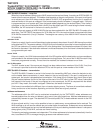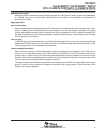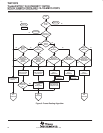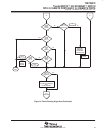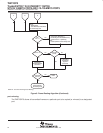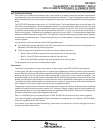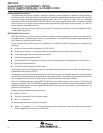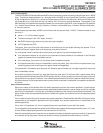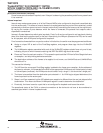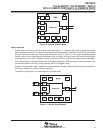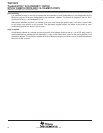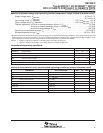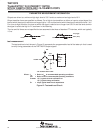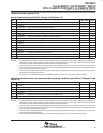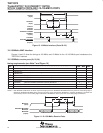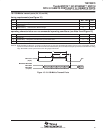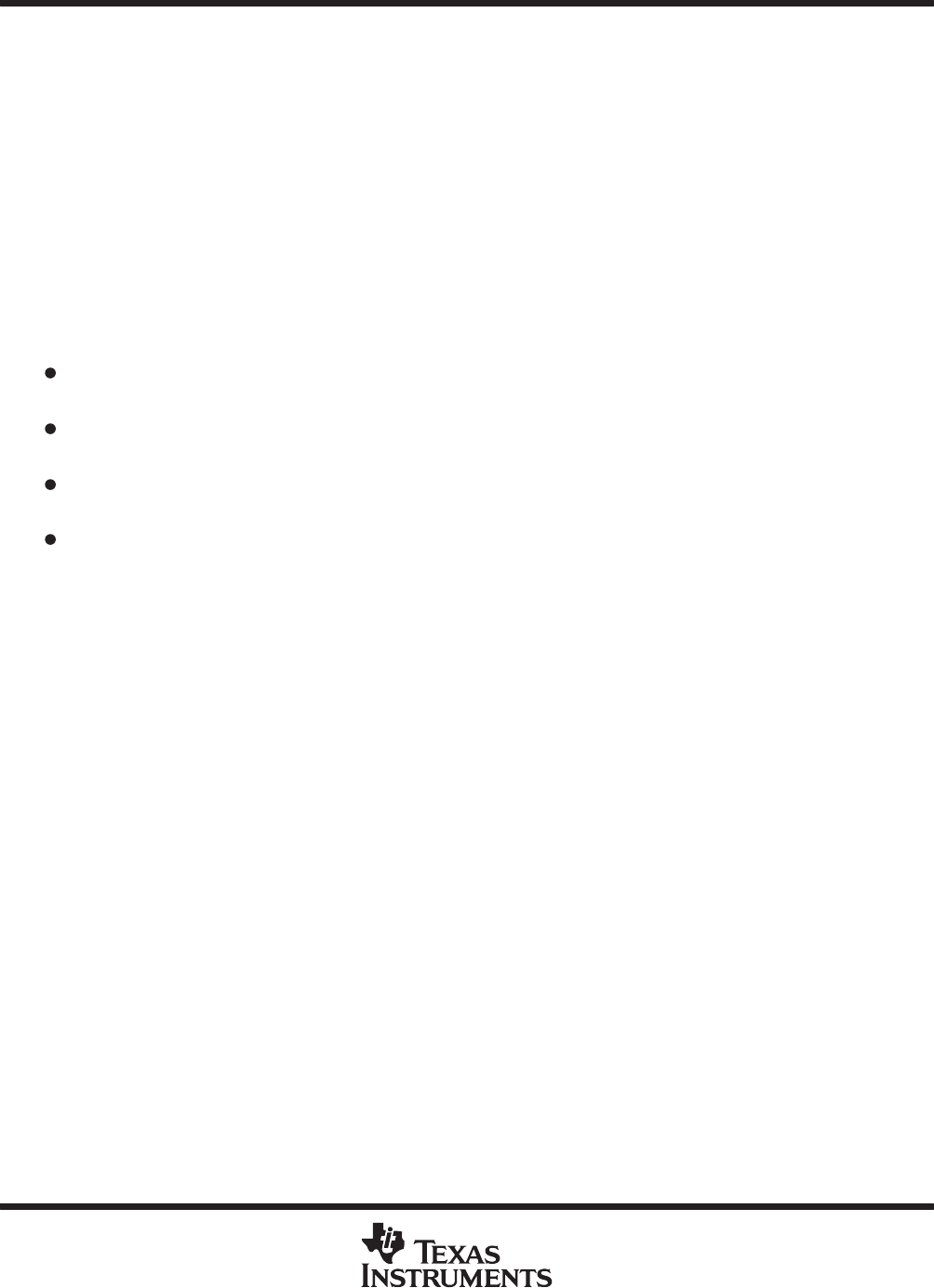
TNETX3270
ThunderSWITCH 24/3 ETHERNET SWITCH
WITH 24 10-MBIT/S PORTS AND 3 10-/100-MBIT/S PORTS
SPWS043B – NOVEMBER 1997 – REVISED APRIL 1999
48
POST OFFICE BOX 655303 • DALLAS, TEXAS 75265
pause frame transmission (continued)
Pause frames are transmitted if required, even if the port is observing the pausetime period from a pause frame
it has received.
internal wrap test
Internal wrap mode causes some or all of the Ethernet MACs to be configured to loop back transmitted data
into the receive path. This allows a frame to be sent into a designated source port and then selectively routed
successively to and from ports involved in the test, before finally transmitting the frame out of the original port.
By varying the number of ports between which the frame is forwarded, the potential fault capture area is
expanded or constrained.
Intwrap in Systest determines which ports loop back. Ports 0 or 8 can be configured to not loop back, allowing
them to be used as the start/end port for the test. Alternatively, the NM port (accessed via DIO) can be used
for this purpose, with all MII ports configured to loop back.
For a frame to be forwarded from one port to another in this fashion, the switch must be programmed as follows:
Assign a unique VID to each of the PortxQtag registers, and program these tags into the VLANnQID
registers.
The VLANnports register associated with each of the VLANnQID registers should have only one bit set,
indicating the port to which frames containing that IEEE Std 802.3 tag should be routed.
Rxacc and Txacc for each port must be 1. This causes the port to add the VID from its PortxQtag to the frame
on reception, and strip the tag before transmission.
The destination address of the frames to be applied is not known, and UnkUniPorts and UnkMultiPorts
should be all 1s.
This causes the following:
1. The VID from the source port PortxQtag register is added to the frame upon reception. As the address of
the frame is unknown, it is forwarded to the AND of the appropriate VLANnports and Unkuniports (unicast)
or Unkmultiports (multicast). As VLANnports should contain only a single 1, this should be a single port.
2. The frame is transmitted from the destination port selected in 1. Its VLAN tag is stripped beforehand; the
frame loops back to the receive path.
3. Steps 1 and 2 are repeated, but the VID added upon reception is different from the one just stripped off at
transmission. This means a different VLANnports register is used to determine the destination.
4. Eventually, the frame is sent to a port that is not configured for loopback and leaves the switch.
The operational status of the PHYs or external connections to the device do not have to be considered or
assumed good when in internal loopback mode.



